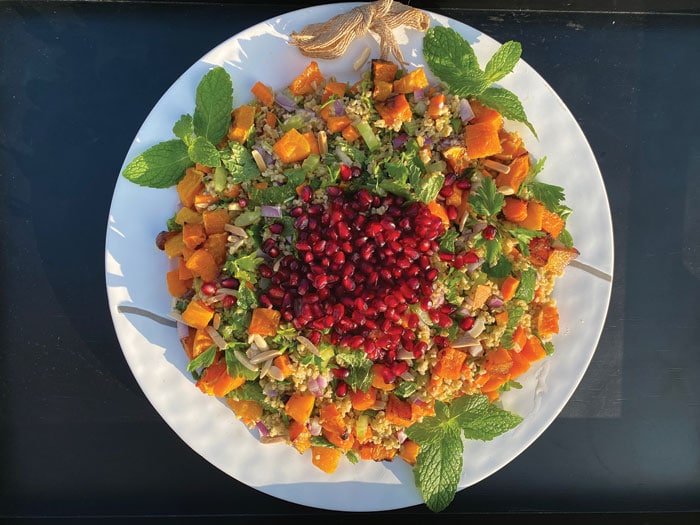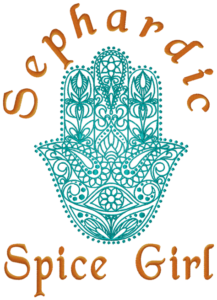Fabulous Freekeh
Freekeh has a rich, nutty flavor and can be cooked like rice and barley. It makes an excellent addition to soups, stews and pilafs.

Move over quinoa. There’s a new grain in the kitchen.
Freekeh is the new (rather ancient) grain darling of the foodie scene!
Called carmel in ancient Hebrew, it is mentioned in the Bible as aviv kaluyi ba’esh (spring burnt by fire) and was part of the first “fruits” offering brought to the Holy Temple in Jerusalem for the holiday of Shavuot.
In Biblical Israel, wheat was the most valuable crop. But it was vulnerable to hamsin or sharav, the hot, dry, sandy winds that blow in from the Egyptian Sahara that could destroy crops and lead to famine. As a form of insurance, farmers in Israel and the Mediterranean Basin would harvest the unripe green wheat and toast the stalks on open fires. Then they would rub away the burned chaff to reveal the wheat kernels. These grains were stored until the winter, then cooked into porridges and stews.
The name Freekeh derives from the Arabic word farik, which means rubbed and so the name refers to the way the grain is processed
Freekeh is still common in the cuisines of the Middle East and Mediterranean. In Egypt it is used to stuff pigeons and in Syria and Jordan it is prepared with lamb. In Turkey, it is served as a pilaf with chickpeas, herbs and spices. In Tunisia and Algeria, it is the main ingredient in a popular tomato-based soup called “shorbat frik.”
This ancient harvesting practice has been preserved for generations in the Arab villages in the Galilee. Nowadays Freekeh is commercially produced and widely available.
FREEKEH IS CONSIDERED A NUTRITIONAL SUPERFOOD, LIKE QUINOA, SPELT, AMARANTH AND FARRO. HIGH IN PROTEIN AND FIBER, VITAMINS AND MINERALS, FREEKEH IS LOW ON THE GLYCEMIC INDEX.
Freekeh is considered a nutritional superfood, like quinoa, spelt, amaranth and farro. High in protein and fiber, vitamins and minerals, Freekeh is low on the glycemic index.
Freekeh has a rich, nutty flavor and can be cooked like rice and barley. It makes an excellent addition to soups, stews and pilafs. We recommend Pereg’s Cracked Freekeh, which needs a shorter cooking time and tastes great.
In the late summer, we had a Sephardic Spice Girls potluck dinner with some of our close friends. Molly Jalali (catch her with comedian Elon Gold on the hysterically funny Saturday night live Instagram show, “The Bachor”) brought a delicious Freekeh Salad. She included cherry tomatoes, cucumbers, peppers and parsley with a lemon and olive oil dressing which gave her salad a fresh, tangy flavor. Everyone raved.
Reminiscing about that fun evening and the food we ate inspired us to create a winter version of that salad. Our Fabulous Freekeh Salad includes sweet roasted butternut squash, crunchy carrots, crispy celery, herby fresh mint and Italian parsley and slivered almonds. Classic fresh lemon and extra virgin olive oil dressing contrasts with the Freekeh and veggies for the perfect citrusy, peppery flavor.
Freekeh salad recipe
1 cup cracked Freekeh
1 pound butternut squash, diced
1 small red onion, finely diced
2 celery stalks
1 cup carrots, finely diced
1 cup chopped Italian parsley
1 cup chopped mint
1 cup slivered almonds
1 cup pomegranate arils, for garnish
Cook one cup Freekeh according to package directions, then set aside and let cool.
Roast butternut squash until fork tender and let cool.
In a large bowl, combine the Freekeh with the butternut squash, purple onion, celery, carrots, parsley, mint and slivered almonds.
Add the dressing and toss gently.
Garnish with pomegranate.
Dressing
1/3 cup olive oil
2 lemons, juiced
Salt and pepper to taste
Whisk ingredients until mixed well.
Rachel Sheff and Sharon Gomperts have been friends since high school. They love cooking and sharing recipes. They have collaborated on Sephardic Educational Center projects and community cooking classes. Follow them on Instagram @sephardicspicegirls and on Facebook at Sephardic Spice SEC






